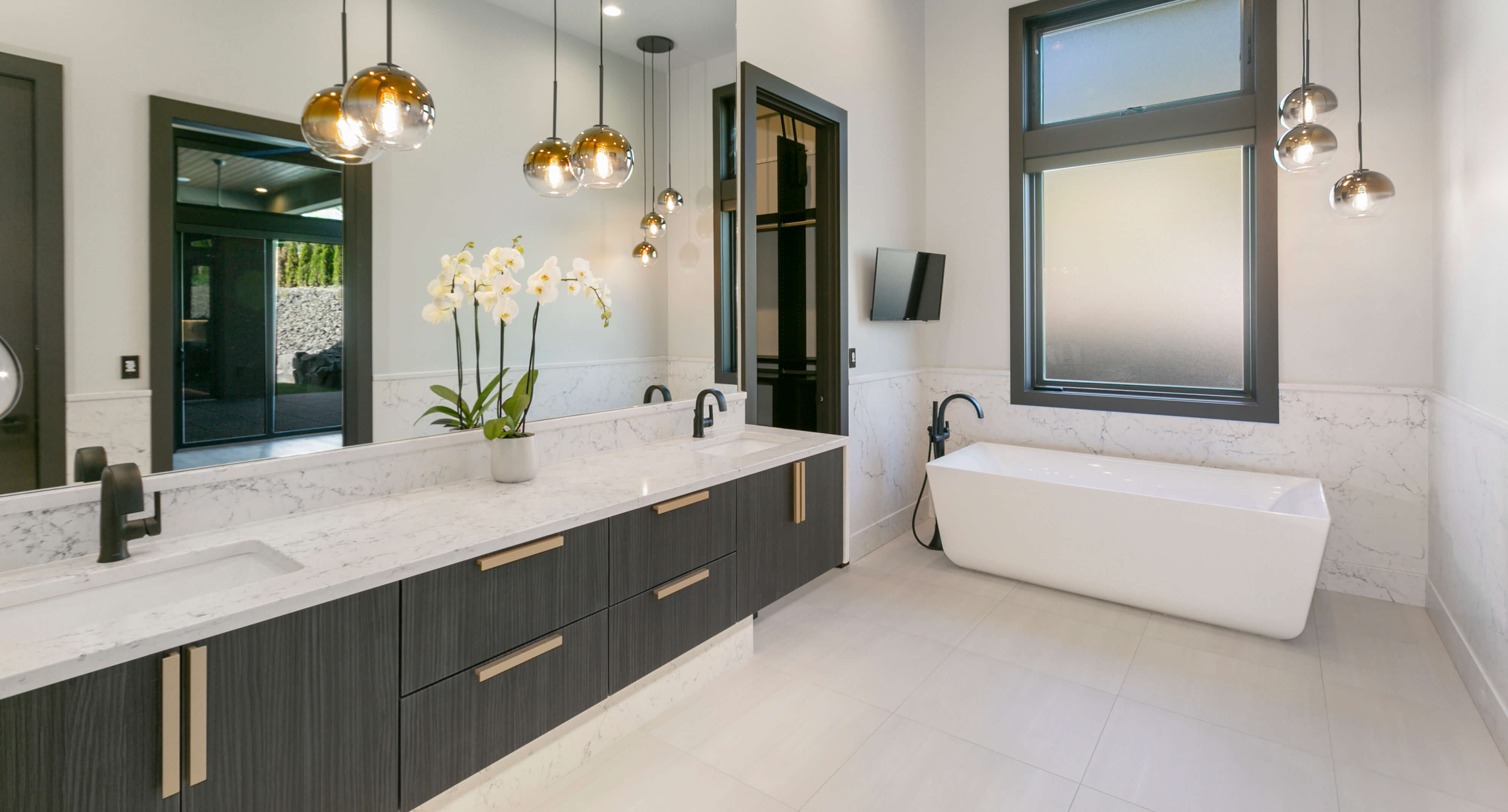Floating Stone Bathroom Vanity

Floating bathroom vanities have become a popular choice for homeowners looking to add a touch of modern elegance to their bathroom. This style of vanity offers a sleek and minimalist aesthetic, creating an illusion of more space and a sense of airy openness. The appeal of floating vanities lies in their versatility, allowing for a variety of materials, styles, and designs to complement any bathroom decor.
History and Evolution of Floating Vanities, Floating stone bathroom vanity
The concept of floating vanities emerged in the late 20th century, driven by the growing trend of minimalist design. Initially, floating vanities were primarily made from wood or laminate, but with the increasing demand for durable and luxurious materials, stone became a popular choice. This shift reflected the desire for a more sophisticated and timeless look that could withstand the test of time. The evolution of floating vanities has seen a gradual shift from basic designs to more elaborate and intricate styles, incorporating innovative features like integrated lighting and hidden storage compartments.
Appeal of Stone Vanities in Bathroom Design
Stone vanities are highly sought after for their durability, elegance, and natural beauty. Their inherent strength and resistance to moisture make them ideal for the humid environment of a bathroom. The unique patterns and textures of natural stone add a touch of sophistication and character to the space. Stone vanities are also highly versatile, offering a wide range of colors, finishes, and styles to suit different aesthetic preferences.
Types of Stone Used for Vanities
Stone vanities are available in a variety of materials, each with its unique properties and aesthetic appeal. The most common types of stone used for vanities include:
- Granite: Known for its durability, scratch resistance, and wide range of colors and patterns, granite is a popular choice for bathroom vanities. Its natural beauty and unique veining add a touch of elegance to any bathroom.
- Marble: Marble is a luxurious and elegant stone that adds a touch of sophistication to any bathroom. Its soft, smooth texture and intricate veining create a timeless and classic look. However, marble is more porous than granite, making it more susceptible to staining and etching. Proper sealing and maintenance are essential to preserve its beauty.
- Quartz: Quartz is an engineered stone that combines the beauty of natural stone with the durability of engineered materials. It is non-porous and resistant to scratches, stains, and heat, making it a practical and stylish choice for bathroom vanities. Quartz is available in a wide range of colors and patterns, offering endless design possibilities.
- Limestone: Limestone is a natural stone known for its warm, earthy tones and unique veining. It adds a rustic and organic feel to bathroom spaces. However, limestone is more porous than granite or quartz and requires regular sealing to prevent staining.
- Travertine: Travertine is a type of limestone known for its distinctive holes and pores. It offers a unique and elegant look, adding a touch of rustic charm to bathroom spaces. However, travertine is porous and requires regular sealing to prevent staining and damage.
Floating Stone Vanities in Different Bathroom Styles
Floating stone vanities can be incorporated into a variety of bathroom styles, from modern and minimalist to traditional and eclectic. Here are some examples of floating stone vanities in different bathroom styles:
- Modern Bathroom: A floating vanity made of sleek, polished granite or quartz with a minimalist design would complement a modern bathroom. The clean lines and simple geometry of the vanity would create a sense of spaciousness and sophistication.
- Minimalist Bathroom: A floating vanity made of white marble with a simple, streamlined design would enhance the minimalist aesthetic of a bathroom. The white marble would create a sense of light and airiness, while the minimalist design would emphasize the clean lines and simplicity of the space.
- Traditional Bathroom: A floating vanity made of warm-toned travertine or limestone with ornate detailing would add a touch of elegance to a traditional bathroom. The natural stone would complement the traditional elements of the space, while the intricate details would create a sense of craftsmanship and sophistication.
- Eclectic Bathroom: A floating vanity made of a mix of materials, such as reclaimed wood and polished marble, would add a unique and eclectic touch to a bathroom. The combination of different materials would create a sense of interest and personality, while the floating design would keep the space feeling open and airy.
A floating stone bathroom vanity, with its sleek, minimalist design, can instantly elevate the aesthetic of any bathroom. Its natural beauty and durability make it an excellent choice for those seeking a timeless and elegant look. To complement this statement piece, consider incorporating dark blue bathroom cabinets , which will add a touch of sophistication and depth to the space.
The contrasting colors and textures create a visual harmony, making the floating stone vanity the focal point of the room while the dark blue cabinets provide a grounding element.
Floating stone bathroom vanities offer a sleek and modern aesthetic, often featuring a minimalist design that emphasizes the natural beauty of the stone. When space is limited, consider incorporating a corner bathroom vanity cabinet to maximize storage and create a visually interesting focal point.
The combination of a floating stone vanity and a corner cabinet can create a harmonious and functional bathroom design.
